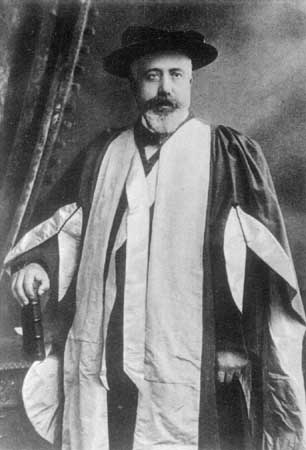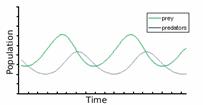Vito Volterra

Volterra was born into a poor family in Ancona, Italy on May 3, 1860 but, displaying remarkable mathematical talent at an early age, he obtained his doctorate in physics at the age of 22. His early research had an undeniable influence on the development of modern calculus, but his scientific career was interrupted by the outbreak of the First World War, when he worked on airships for the Italian military. It was not until after the war that he applied his mathematics to biology and developed the famous Volterra-Lotka equations. Later, being fiercely opposed to the Italian fascist regime led by Mussolini, he was forced to resign his university post, and did not return to Rome until the age of 80.
His Volterra-Lotka or predator-prey equations, describe the rate at which the interlocking populations, x, of prey animals and y, of predator animals, change over time. Without predators, the prey population, x, grows at a rate ax proportional to the existing prey population. With predators, this growth is reduced at a rate –bxy proportional to the product of the predator and prey populations. Thus the rate of change of x with respect to time is
 . The rate of change of the predator population is similar but in reverse. Together the two equations
. The rate of change of the predator population is similar but in reverse. Together the two equations

describe the oscillatory behaviour of the two populations.

